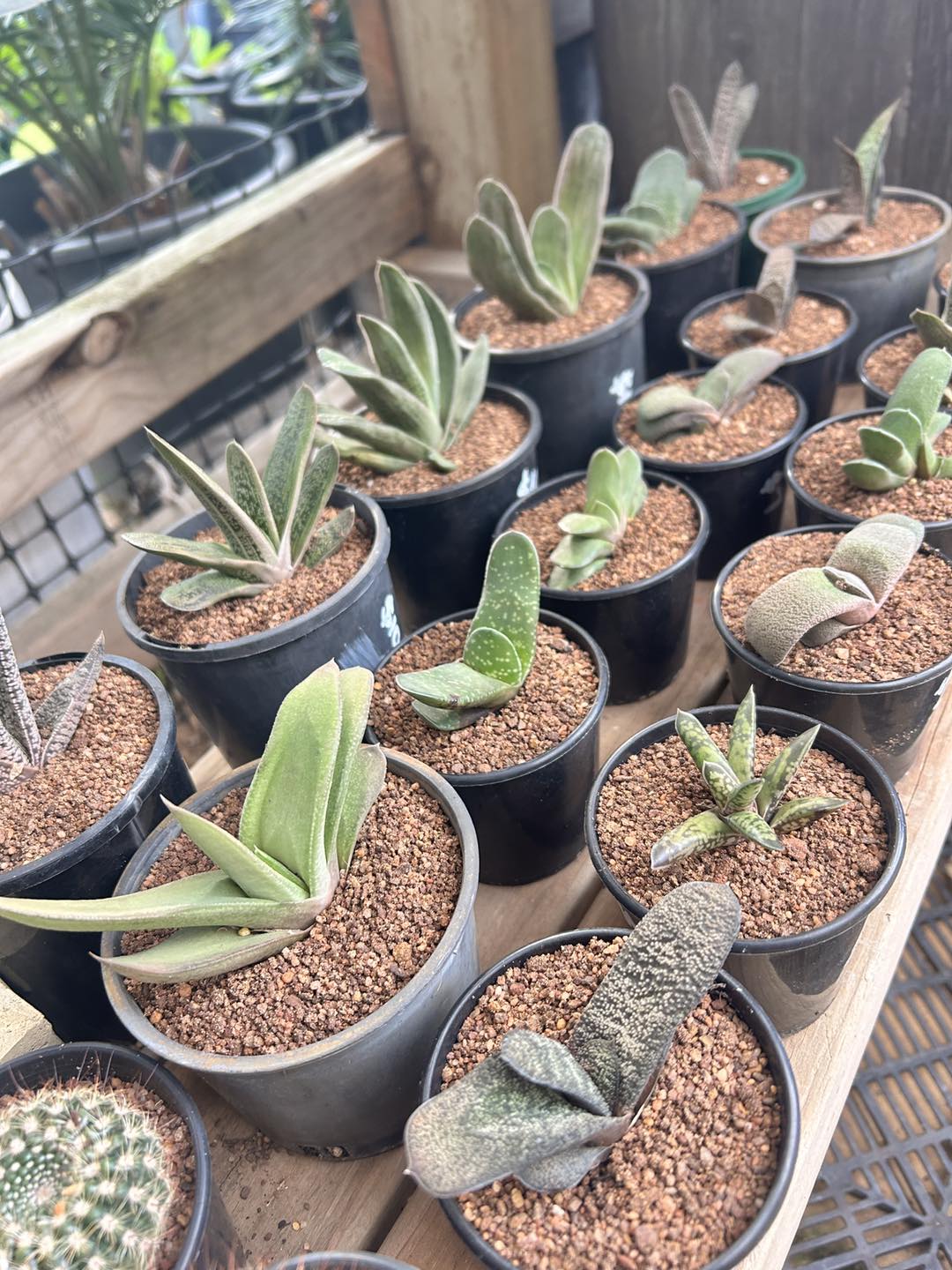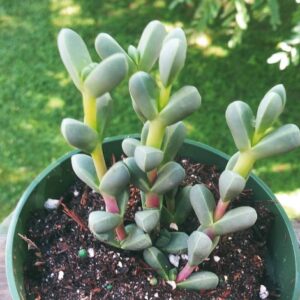🌿✨ Ox-Tongue Plant (Gasteria spp.) — The Hardy Spotted Succulent
The Ox-Tongue Plant, commonly known as Gasteria, is a genus of succulent plants native to South Africa. Its common name arises from the thick, rough, tongue-shaped leaves that often have a distinctive speckled or mottled pattern resembling the tongue of an ox.
Valued for its unique leaf textures, tolerance to low light, and compact size, Gasteria is a favorite for indoor gardening and succulent collections. It is also non-toxic to pets, making it an excellent choice for households with animals.
🌿 Botanical Overview
Genus: Gasteria
Family: Asphodelaceae
Origin: South Africa
Common Names: Ox-Tongue Plant, Lawyer’s Tongue, Cow Tongue Cactus (though not a true cactus)
Growth Habit: Slow-growing, rosette or distichous (two-ranked leaf arrangement)
Size:
Height: 6 to 12 inches (15–30 cm)
Spread: 8 to 18 inches (20–45 cm) depending on species and conditions
USDA Zones: 9–11
🍃 Appearance
Leaves:
Thick, fleshy, elongated leaves
Textured and sometimes rough to the touch, resembling a tongue
Variegated, speckled, or mottled with white, gray, or green patterns
Some species display leaf margins with tiny teeth or smooth edges
Flowers:
Produces tubular, curved flowers that resemble small stomachs or sacs
Blooms in spring or summer on a tall, slender stalk
Flower colors range from pink to coral, sometimes orange or green-tipped
The distinctive appearance of Gasteria makes it a striking decorative plant for homes and offices.
☀️ Light Requirements
Indoors:
Thrives in bright, indirect light
Tolerates low-light conditions, unlike many succulents
Ideal for north or east-facing windows
Avoid prolonged direct sunlight, which can scorch leaves
Outdoors:
Prefers partial shade to filtered sunlight
In hot climates, it must be protected from intense afternoon sun
Proper lighting enhances the leaf coloration and speckled patterns.
🌡️ Temperature & Humidity
Temperature:
Ideal range: 15–25°C (59–77°F)
Minimum temperature: 5°C (41°F)
Not frost-tolerant — bring indoors if temperatures fall below 10°C (50°F)
Humidity:
Prefers low to moderate humidity
Naturally adapted to dry conditions
Ensure good air circulation to prevent fungal diseases in humid areas.
💧 Watering Routine
Spring to Autumn (Active Growth):
Water when the top 1–2 inches of soil are dry
Generally every 10–14 days, adjusting for climate
Water thoroughly, allowing excess water to drain
Winter (Dormancy):
Reduce watering to once a month
Soil should remain almost dry
🚫 Avoid overwatering, which is the primary cause of root rot.
🌱 Soil Requirements
Type:
Requires well-draining soil
Ideal soil mix:
50% cactus/succulent mix
25% coarse sand
25% pumice or perlite
pH: Neutral to slightly acidic (6.0 to 7.0)
The correct soil mix prevents water retention, protecting roots from rot.
🌾 Fertilizing
During Growing Season:
Fertilize once a month with a diluted cactus or succulent fertilizer
Avoid high nitrogen fertilizers; a balanced or low-nitrogen formula (5-10-10 NPK) is ideal
Winter:
No fertilization is needed during dormancy
✂️ Maintenance and Pruning
Pruning:
Remove dried, dead, or damaged leaves
Clean debris around the plant to deter pests
Pests:
Occasionally vulnerable to:
Mealybugs
Spider mites
Scale insects
Treat infestations promptly with neem oil or insecticidal soap
🌿 Propagation
Offsets (Pups):
Gasteria produces offsets around the base
Gently remove pups when they are at least one-third the size of the parent
Let them callous for a day before planting in dry, well-draining soil
Leaf Cuttings:
Less common but possible
Cut a healthy leaf, let it dry for a few days, then place it in soil
Rooting is slow and less reliable than offsets
Seeds: Rarely used due to slow growth and difficulty.
🛡️ Common Issues
Overwatering: The biggest threat, leading to root rot
Sunburn: From excessive direct sunlight, causing leaf bleaching
Pests: Mealybugs, spider mites in dusty, poorly ventilated spaces
Etiolation: If light is too low, the plant may become leggy
🎍 Decorative Use
Great for:
Indoor pots and desk plants
Shaded patios
Rock gardens and xeriscapes
Mixed succulent arrangements
Its unique leaf patterns, compact growth, and adaptability make Gasteria a standout in succulent collections.
✅ Conclusion
The Ox-Tongue Plant (Gasteria) is a durable, beautiful, and easy-care succulent, perfect for both beginners and experienced gardeners. Its ability to thrive in low light, tolerate neglect, and resist pests makes it ideal for homes, offices, and indoor gardens. With proper care, Gasteria will reward you with its textured, eye-catching leaves and occasional delicate blooms.





Reviews
There are no reviews yet.